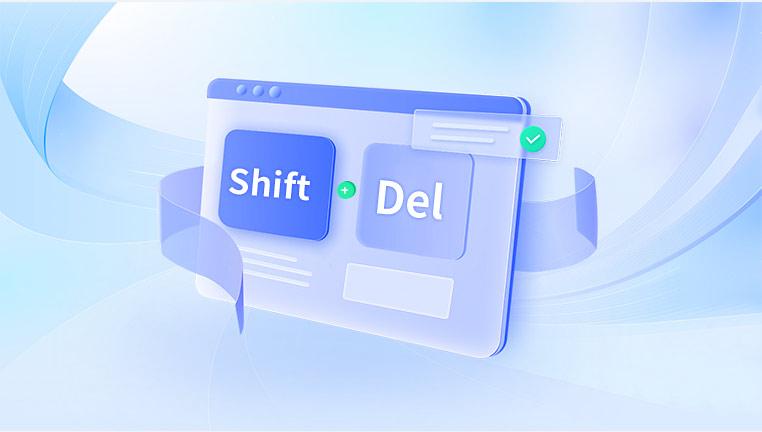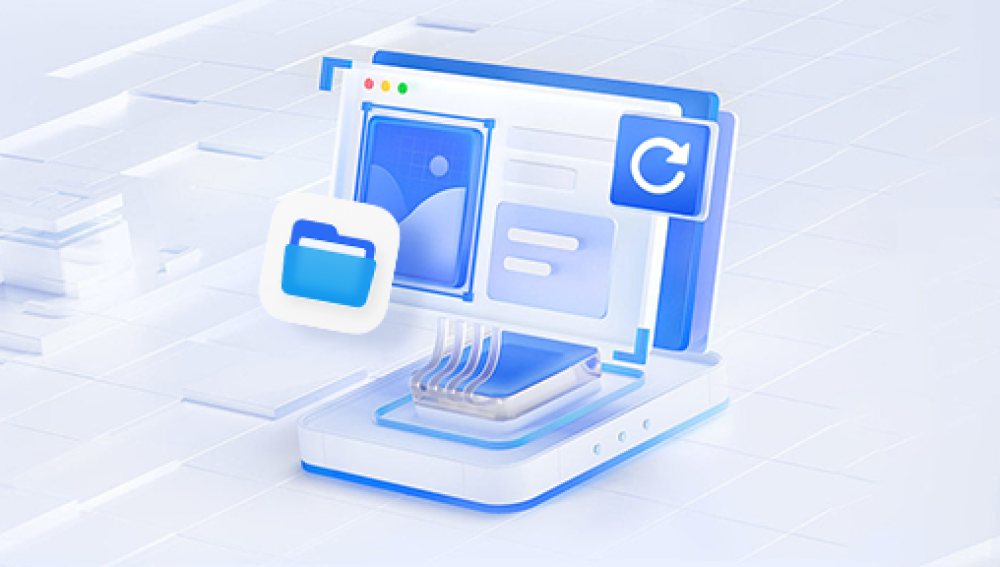Accidentally pressing Shift + Delete can be a gut-wrenching experience. Unlike regular deletion, which sends files to the Recycle Bin, Shift + Delete bypasses it entirely, making recovery seem impossible. Whether you lost a vital work document, cherished photos, or sensitive data, it's important to know that "permanently deleted" doesn't always mean unrecoverable.
Even though modern operating systems are user-friendly, they’re not foolproof. Mistakes like Shift + Delete are common, and understanding your options is the first step in bouncing back from data loss.
What Does Shift + Delete Really Do?
Before you jump into recovery solutions, it’s helpful to understand what happens when you delete files using Shift + Delete.

Normally, when you delete a file, Windows moves it to the Recycle Bin. You can later open the Bin and restore files with a few clicks. But when you use Shift + Delete:
The file bypasses the Recycle Bin.
The system removes file references from the file allocation table.
The data still physically exists on the hard drive until overwritten by new data.
So technically, the file isn't gone it’s just invisible to the system. That’s why quick action is crucial. The longer you use your device after deletion, the higher the risk of permanent overwriting.
Step 1: Stop Using the Affected Drive Immediately
Once you realize you've deleted files using Shift + Delete:
Do not install new programs.
Avoid downloading or creating files.
Do not restart or format the drive.
Continued use may overwrite the deleted data, making recovery impossible.
Step 2: Try File Recovery from Backup
Before turning to recovery software or professionals, check if a backup exists. Here are common backup sources:
1. File History (Windows)
If File History is enabled:
Open the folder where the file existed.
Right-click inside the folder.
Choose "Restore previous versions."
Browse and select the version you want to restore.
2. OneDrive or Cloud Services
If you use OneDrive, Dropbox, or Google Drive:
Visit your account via a browser.
Go to the Trash/Deleted Files section.
Restore your file if it's still there.
3. External Backup Drive
If you’ve been using backup software like Windows Backup, Acronis, or Macrium Reflect:
Launch the backup software.
Browse the backup history.
Find and restore the deleted file.
If there’s no backup available, proceed to the next step.
Step 3: Use Data Recovery Software
If no backup exists, data recovery software is the most effective DIY solution. These tools scan your hard drive for recoverable files, including those deleted via Shift + Delete.
Best Data Recovery Software Options
Drecov Data Recovery
Drecov Data Recovery is designed with simplicity in mind. The step-by-step process walks users through selecting the affected device, scanning for recoverable files, previewing results, and restoring files to a safe location. The clean interface reduces confusion and streamlines the recovery process, making it accessible to users with little to no technical experience.
Another key advantage is the software’s read-only operation. This means it doesn’t write or alter data on the target drive during scanning or recovery, preserving the integrity of your lost files and increasing the chance of successful restoration. For more advanced users, Panda also offers features such as file filtering, hex preview, and raw recovery options, giving greater control over complex data loss scenarios.
Security is another priority. Drecov Data Recovery does not transmit or share your recovered data, maintaining complete privacy and confidentiality throughout the recovery process. Regular updates and broad file system support—including NTFS, FAT16/FAT32. exFAT, and more—ensure compatibility with both legacy and modern systems.
Learning from mistakes is key. Here are tips to prevent accidental Shift + Delete scenarios:
1. Enable Confirmation Dialog
Make Windows ask before permanent deletion.
Right-click Recycle Bin > Properties.
Check "Display delete confirmation dialog."
2. Use Cloud Storage
Store important files on cloud services like Google Drive or OneDrive. They maintain a version history and trash.
3. Set Up File History
Turn on File History in Windows to automatically back up documents, photos, and more.
4. Avoid Using Shift + Delete
Get into the habit of using plain Delete and empty the Recycle Bin only when you're certain.
Common Myths About Shift + Delete Recovery
Myth 1: Files are destroyed immediately
Fact: The data stays on disk until overwritten.
Myth 2: SSD recovery is as easy as HDD
Fact: SSDs with TRIM make recovery far more difficult.
Myth 3: Free software is just as good as paid
Fact: Paid tools often offer deeper scans, better recovery rates, and tech support.
Myth 4: Once overwritten, files can be restored
Fact: Overwritten data is essentially lost and not recoverable by software.
Real-World Scenario: Shift + Delete Recovery Success
User: Deleted project files for a client presentation.
System: Windows 11. no backup.
Action: Used Recuva immediately, scanning only the folder path.
Result: 95% of files recovered, though some media files were partially corrupted.
Lesson: Speed matters. Stop using the drive and act quickly.




